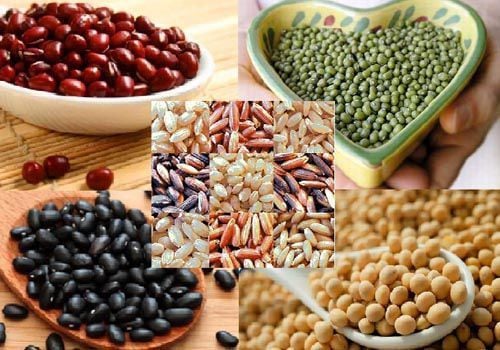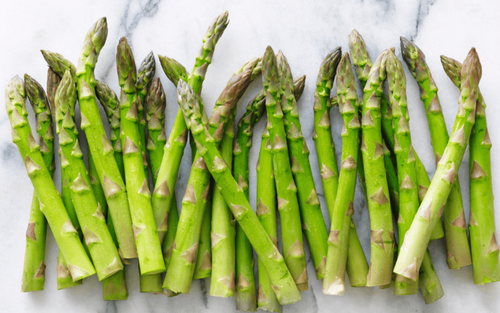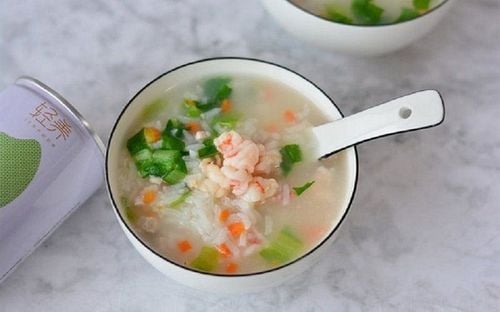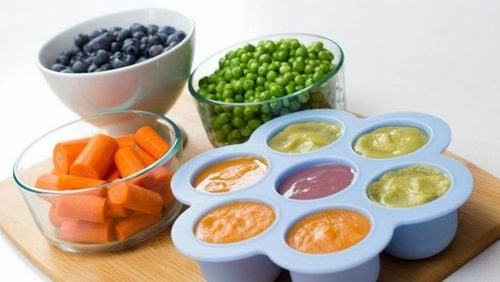This is an automatically translated article.
In the process of feeding the baby solid food, in addition to adding nutrients to the baby, it is also very important to gradually introduce the baby to solid foods. This is a step forward to help your baby get used to rough foods and perfect in the process of supplementing later on.Video content is professionally consulted by Dr. Pham Lan Huong, Doctor Nhi, Vinmec Times City Hospital
1. Stage 1 (6 months old)
When starting to learn to eat solid foods, children often just "swallow" so the mother cooks diluted porridge at a ratio of 1: 10 (1 rice, 10 water) then sifted through a mesh finely and mixed with dashi water to make the porridge thinner. Baby has just eaten about 2-3 times after getting used to gradually reducing the sieve to 1 time.For tubers: you should sift right after steaming/boiling, while it's still hot, sifting will be easier.
For vegetables: give your baby the leafy part of the vegetable because the leaves are softer and more nutritious. When steaming/boiling, mother used pestle and mortar to pound and then sieve through a mesh.
2. Stage 2 (7-8 months old)
At this stage, cook porridge for your baby in a ratio of 1:7 (1 rice, 7 water). The first half of stage 2, cooked porridge still needs sifting (8 parts sifted, 2 parts mashed with a spoon) but when the baby is from about 7 and a half to 8 months, they don't sieve fine anymore, but let them eat coarser, only You need to grind it with a spoon.For vegetables: In the first half of the steaming / boiling stage (the fruits and vegetables need to be cooked so that they can be crushed with 2 fingers gently), then 8 parts are sieved, 2 parts crushed using a fork, gradually increasing coarseness later. A few days to a half later, diced fruits and vegetables like boiled black beans.
For protein group: Steamed fish is boiled on a nail grinding table (when it is still hot), minced meat is mixed with water and then cooked on low heat. Usually, the catfish will be loose, so keep this structure for the baby to eat, and for the minced meat but still large, the mother can re-sie through the 8-part mesh, the remaining 2 parts keep the same structure and increase the coarseness. gradually similar to vegetables.
3. Stage 3 (9-11 months old)
After getting used to food for a while, the baby can chew more proficiently, so please cook porridge with a ratio of 1:5 (1 rice, 5 water). After the porridge is cooked, feed the baby whole grains. Then, at the end of this period, it can be gradually increased to whole grain porridge, whole grain porridge in the ratio 1:3 (1 rice, 3 water).For vegetables: Sliced fruits and vegetables are bigger than the previous stage, like a stick (about 5mm) for babies to practice chewing.
For the protein group: at this time, it is possible to do more diverse processing such as steaming, stir-frying, boiling, frying.

4. Stage 4 (12-18 months)
At this time, the baby's food structure is relatively complete, he can eat hard things and can bite with his gums. To ensure that it is suitable for the chewing needs of the baby, mothers should process foods of different shapes and hardness. At the beginning of the stage, the baby can learn to eat crushed rice, in the middle and after the stage, the baby can eat soft rice like an adult.This is also the “ideal” time when you can help your baby become independent by learning to feed himself.
For vegetables: Steamed/soft boiled vegetables cut into about 1cm
For the protein group: at this time, children also eat more variety, diced fish rolled in deep-fried flour, made soft rolls or braised. Tofu can be left whole when eating and then feeding it to your baby. Meat can be stewed with vegetables for the baby to eat....
In addition, when starting to feed the baby, scoop 1 spoon of porridge to let the porridge drip into the bowl, this time it will drip as fast as 1s/2, 3 drops. Then a few meals gradually increase 1s/1 drop...and continue to increase gradually. At the stage of 7.8 months, it takes 5s for a spoon of porridge to drop 1 drop, because at this time, eating porridge is thicker. In the period of 9-11 months, the porridge does not decrease anymore.
When giving your baby a try on a certain food, the first thing you should give your baby to eat is from a little to a lot to see the baby's reaction. If you are not used to it, your baby may be prone to vomiting, but parents do not worry too much, the baby will clear this condition after a few days if we increase it slowly and properly.
Please dial HOTLINE for more information or register for an appointment HERE. Download MyVinmec app to make appointments faster and to manage your bookings easily.














